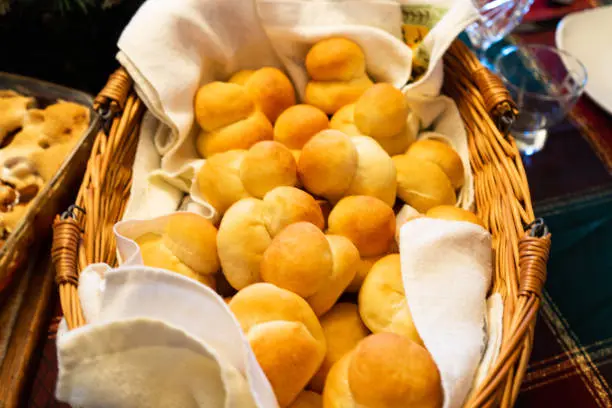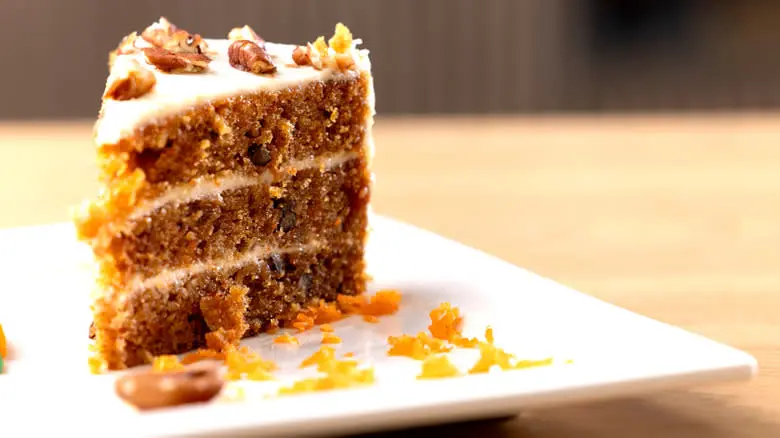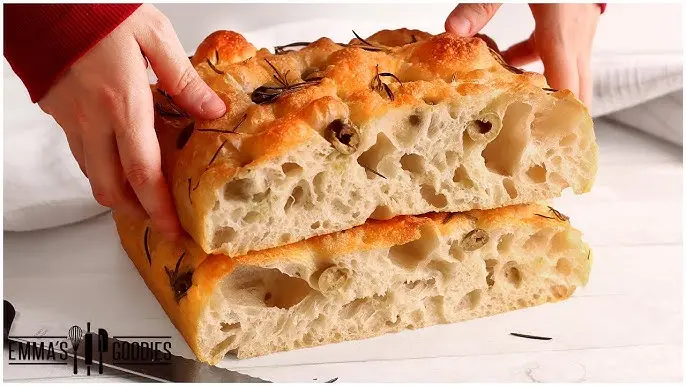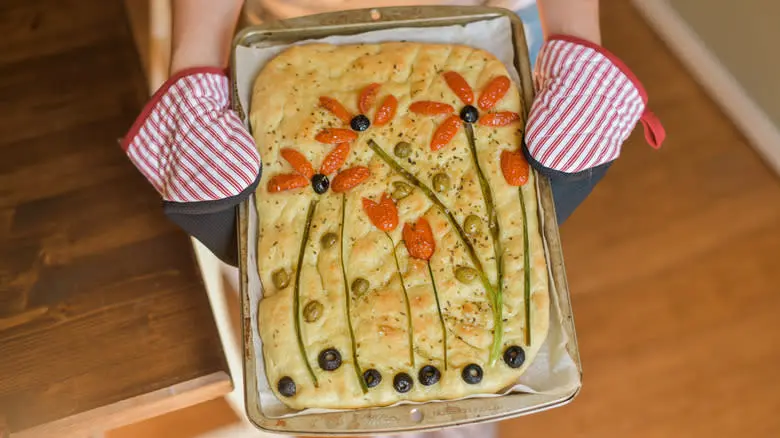Alternative toppings and tips for perfect focaccia
Without the inclusion of delicate herbs and moist ingredients like fresh tomatoes, what are some of the best toppings to incorporate into your focaccia dough? There are plenty of drier vegetables that complement the fluffy bread beautifully, such as sliced olives, caramelized onions, and sun-dried tomatoes. When it comes to herbs, rosemary is a favored choice for focaccia, particularly because it bakes exceptionally well. Thyme and sage are also excellent alternatives, or you can add fresh basil after the bread is baked. Don’t overlook beloved additions like roasted garlic or Parmesan cheese. Sticking to a savory profile rich in Italian flavors is sure to produce a delicious loaf.
However, you’re not confined to savory options or traditional Italian ingredients. Once you’ve perfected the art of homemade focaccia, consider experimenting with unique combinations, such as a sweet apple and cinnamon focaccia, or a blend of marinated stone fruits and hazelnuts. In Tuscany, there’s a well-known dessert focaccia featuring grapes, called schiacciata con l'uva. For a fun twist on breakfast, you might even try a breakfast focaccia made with eggs and bacon.
To make baking and storing your focaccia easier, here are a couple of extra tips. If you prefer not to make dough from scratch, you can use store-bought pizza dough for a nearly identical taste and texture. Have some leftovers after your meal? Don’t worry about them going stale—just freeze your focaccia in small portions, starting with a quick flash-freeze.
Recommended

The Ideal Way To Reheat Dinner Rolls So They're As Good As New

The Flavorful Ingredient Ina Garten Uses To Elevate Carrot Cake Frosting

The White Chocolate Substitution Mistake You Don't Want To Make

The Ideal Baking Temperature For Focaccia
Next up

